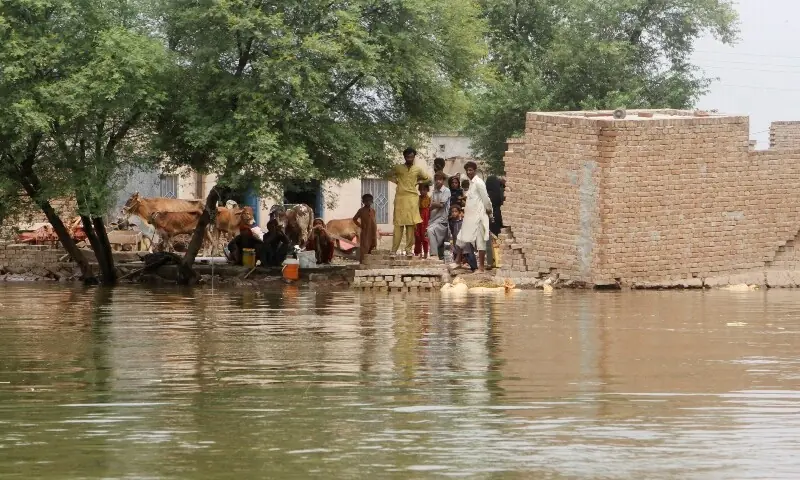Pakistan Floods 2025: Over 900 Dead, Millions Displaced as Monsoon Rains Trigger Crisis
Experts warn of large-scale migration and long-term agricultural damage
ISLAMABAD – Weeks of relentless monsoon rains have caused catastrophic flooding across Pakistan, killing more than 920 people, displacing nearly two million residents, and submerging vast stretches of farmland. Thousands of homes, schools, and livestock have been swept away, making this one of the country’s most severe natural disasters in recent years.
Risk of Mass Migration
Aid agencies and local experts fear the disaster could trigger one of Pakistan’s largest internal migrations since the 2010 floods, when millions were forced to leave their homes.
“Migration has already started in several areas as unprecedented rains and floods have left nothing behind,” said Shaukat Ali Chadhar, president of the Federation of Pakistan Chambers of Agriculture. He warned that as many as one million people may be forced to move to major cities in search of work.
Chadhar explained that around 10 million people dependent on agriculture have been badly affected, especially in Punjab. Standing crops, farmland, and livestock have been destroyed, and it could take up to 18 months before fields are cultivable again.
Climate Disaster Made Worse by Human Factors
According to the National Disaster Management Authority (NDMA), at least 922 people have died and more than 1,000 injured since late June, while over 10,000 homes have been destroyed.
The crisis worsened in late August when India released water from dams under the Indus Waters Treaty, raising flood levels in Punjab. For the first time in Pakistan’s history, three eastern rivers — Sutlej, Jhelum, and Chenab — are simultaneously at “exceptionally high” flood levels.
In the northern region of Gilgit-Baltistan, sudden glacial lake outburst floods have added to the devastation, destroying homes, power lines, and water systems. The United Nations has warned that climate change is accelerating glacier melt, creating unstable lakes that can burst at any time.
Experts also blame unchecked urbanization and illegal construction along natural waterways for worsening flood impacts.
Government Plans Rehabilitation Package
In 2010, more than two million people were displaced by floods, and about 70% never returned home. Experts fear a repeat scenario, warning that mass migration could overwhelm already strained urban infrastructure, deepen poverty, and fuel crime.
“This is an enormous challenge for rehabilitation and food security,” said Hafiz Wasi Mohammad Khan, a member of the Punjab Agriculture Research Board. “Farmers need immediate cash support for seeds and supplies to survive the next season.”
To ease the crisis, the government is preparing a “massive rehabilitation package” that will cover crop losses, farmland recovery, and housing support, according to Punjab Provincial Disaster Management Authority Director General Irfan Ali Kathia. He said this would prevent large-scale migration to cities.
Call for International Support
Farid Abdulkadir Aiywar, head of delegation for the International Federation of Red Cross and Red Crescent Societies (IFRC) in Pakistan, urged the global community not to overlook the unfolding tragedy.
“The crisis is far from over. Entire communities remain underwater, families have lost everything, and access to safe water and healthcare is becoming more urgent by the day,” he warned.
Meanwhile, experts and farmers are calling for a special agriculture fund, loan waivers, and bill relief to help rural communities rebuild.

